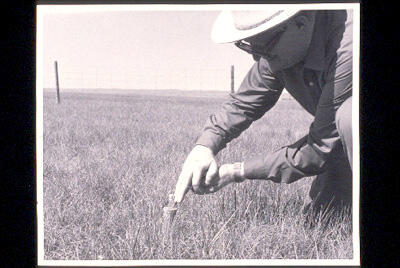
Área de título y declaración de responsabilidad
Título apropiado
Matador International Biological Program Research Station - R.T. Coupland
Tipo general de material
- Graphic material
Título paralelo
Otra información de título
Título declaración de responsabilidad
Título notas
Nivel de descripción
Item
Institución archivística
Código de referencia
Área de edición
Declaración de edición
Declaración de responsabilidad de edición
Área de detalles específicos de la clase de material
Mención de la escala (cartográfica)
Mención de proyección (cartográfica)
Mención de coordenadas (cartográfica)
Mención de la escala (arquitectónica)
Jurisdicción de emisión y denominación (filatélico)
Área de fechas de creación
Fecha(s)
-
1969 (Criação)
Área de descripción física
Descripción física
1 slide : b&w ; 3 x 2 cm
Área de series editoriales
Título apropiado de las series del editor
Títulos paralelos de serie editorial
Otra información de título de las series editoriales
Declaración de responsabilidad relativa a las series editoriales
Numeración dentro de la serie editorial
Nota en las series editoriales
Área de descripción del archivo
Nombre del productor
Historial de custodia
Alcance y contenido
R.T. Coupland, Director of Matador Project (1966-1976) and professor of plant ecology, examines grain in a field.
Bio/Historical Note: From 1967 to 1972, plant ecologists at the University of Saskatchewan participated in the International Biological Program. As part of this worldwide study of agricultural productivity, ecologists established the Matador field station for grassland research carried out by scientists from thirty-four countries. The field station was located near Kyle, thirty miles north of Swift Current, in an area of natural grassland that was potentially the best wheat growing soil in the brown soil zone of Saskatchewan. The land (three square miles) was originally leased for 21 years from the Government of Saskatchewan; the lease (for $1/year) has since been renewed and currently expires in 2009. The Matador Project involved the study of the total grasslands ecosystem, including the interaction of animals, plants, microorganisms, soils and the atmosphere. Robert T. Coupland, Head of the Department of Plant Ecology, served as Director of the Matador Project.
Área de notas
Condiciones físicas
Origen del ingreso
Arreglo
Idioma del material
Escritura del material
Ubicación de los originales
Disponibilidad de otros formatos
Restricciones de acceso
Condiciones de uso, reproducción, y publicación
Copyright: University of Saskatchewan
Other terms: Researchers are responsible for obtaining permission regarding reproductions.
Instrumentos de descripción
Materiales asociados
Acumulaciones
Nota general
From 1967 to 1972, plant ecologists at the University of Saskatchewan participated in the International Biological Program. As part of this worldwide study of agricultural productivity, ecologists established the Matador field station for grassland research carried out by scientists from thirty-four countries. The field station was located near Kyle, thirty miles north of Swift Current, in an area of natural grassland that was potentially the best wheat growing soil in the brown soil zone of Saskatchewan.
The land (three square miles) was originally leased for 21 years from the Government of Saskatchewan; the lease (for $1/year) has since been renewed and currently expires in 2009. The Matador Project involved the study of the total grasslands ecosystem, including the interaction of animals, plants, microorganisms, soils and the atmosphere. Robert T. Coupland, Head of the Department of Plant Ecology, served as Director of the Matador Project.

